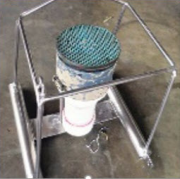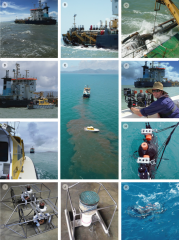NESP TWQ Round 2 - Project 2.1.9 - Risk assessing dredging activities
The project will use novel analytical techniques, instruments and approaches to accurately quantify key proximal stressors associated with dredging and dredge material placement – such as sedimentation, changes in light quantity and quality (spectral changes), and suspended sediment concentrations. The project will examine how these parameters vary with increasing distance from dredging and how they compare to natural conditions associated with storms and high wind events (see image below). The team will then test the response of key habitat forming species that may occur near dredged areas – corals, sponges and seagrass – to environmentally relevant and realistic conditions over appropriate time-frames. This will generate pressure-response data that can be used during dredging for adaptive management and with pressure field modelling at the EIA stage for impact prediction purposes. Collectively, this will improve risk assessment processes, provide greater surety for regulators and dredging proponents of likely environmental outcomes, and allow more informed decision-making and dredging policy design.
Images
Datasets

The project will use novel analytical techniques/instrumentation to accurately quantify, for the first time, key proximal stressors associated with dredging/spoil disposal (i.e. sedimentation, light quantity/quality, suspended sediment concentrations) and will determine how these parameters vary with increasing distance from dredging. We will then test the response of corals, sponges, seagrass and algae to environmentally relevant/realistic conditions over appropriate time-frames.

This dataset consists of 1 excel data files (.xlsx format) that contains the results from the in situ deployment of instruments in Cleveland Bay to measure sediment deposition from a trailer suction hopper dredge working in Platypus channel. The aim of the study was to measure sediment deposition rates caused by a working Trailer Suction Hopper dredge in Platypus channel in Cleveland Bay.

This dataset consists of one data file (spreadsheet) from a 28-d experiment examining sediment-induced changes in the spectral quality and quantity of light on three coral species (Acropora millepora, Pocillopora verrucosa and Montipora aequituberculata) and one encrusting sponge species (Cliona orientalis).

The aim of the study was to obtain light and turbidity vertical profile data through the water column in Cleveland Bay over a four-day period and during maintenance dredging to use for developing an empirical spectral solar irradiance model.





